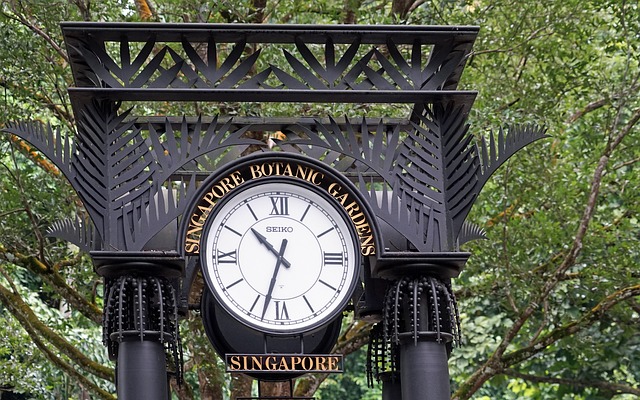Optimizing Tree Health and Environment: A Guide to Tree Trimming and Yard Waste Recycling
Regular tree trimming is essential for maintaining tree health, safety, and aesthetics. This process involves cutting away unhealthy or improperly growing branches, promoting recovery and resilience in trees. Timely pruning, particularly during…….

Regular tree trimming is essential for maintaining tree health, safety, and aesthetics. This process involves cutting away unhealthy or improperly growing branches, promoting recovery and resilience in trees. Timely pruning, particularly during dormant seasons, minimizes the risk of environmental stressors and falling limbs. Effective yard waste removal and recycling are crucial to this process, with services efficiently managing debris to support cleaner communities and sustainable practices. These services convert organic matter into mulch and compost, enriching soil health and supporting plant growth, which in turn contributes to a cycle of nutrient reuse. Professional arborists offer expertise for both large-scale and small-scale tree trimming, ensuring precise cuts that benefit tree longevity. Yard Waste Removal and Recycling are integral to this ecologically sound approach, preventing environmental degradation and promoting biodiversity and soil fertility. Local regulations dictate the proper disposal of yard waste, and municipal programs often assist in converting organic matter into beneficial compost or mulch. Adherence to these guidelines ensures compliance with environmental standards and supports a sustainable community cycle of nutrient reuse.
tree trimming, debris removal, yard waste recycling, professional services, safety, environmental maintenance, local regulations, tree health, schedule planning.
Maintaining the vitality of trees on your property and ensuring a safe environment for your family are pivotal tasks that require regular tree trimming and responsible debris management. This article delves into the intricacies of yard waste removal and recycling, highlighting their significant role in environmental health and community well-being. From understanding the importance of timely tree maintenance to exploring innovative recycling techniques like composting and mulching, we’ll guide you through each step, including how to plan your trimming schedule, assess professional versus DIY options, and navigate local waste removal regulations. Join us as we explore the best practices for keeping your trees in top condition and your yard clear of debris.
- Understanding the Importance of Regular Tree Trimming for Tree Health and Safety
- Key Considerations When Planning Your Tree Trimming Schedule
- The Role of Yard Waste Removal in Maintaining a Healthy Environment
- Innovative Yard Waste Recycling Techniques: Composting and Mulching Benefits
- Professional vs. DIY Tree Trimming: Assessing Your Options for Efficiency and Safety
- Navigating Local Regulations and Services for Yard Waste Removal and Disposal
Understanding the Importance of Regular Tree Trimming for Tree Health and Safety

Regular tree trimming is a vital practice for maintaining the health and safety of trees within both residential and public spaces. This process, often referred to as pruning, involves selectively cutting branches to improve or restore a tree’s structure, health, and appearance. By removing dead, diseased, or crossing branches, trees can heal more quickly from wounds, grow more vigorously, and withstand environmental stresses better. Proper trimming helps to prevent potential hazards such as falling limbs, which can be particularly important during severe weather events. Yard waste removal services play a crucial role in the aftermath of tree trimming, efficiently collecting and recycling the resulting debris. These services not only contribute to cleaner communities but also support sustainable practices by transforming organic waste into valuable resources like mulch or compost, which can then be reintroduced into the soil to aid in nutrient cycling and plant growth. By engaging in regular tree trimming and utilizing yard waste removal and recycling, property owners and landscape managers can ensure the longevity and well-being of trees while also promoting environmental stewardship.
Key Considerations When Planning Your Tree Trimming Schedule

When planning your tree trimming schedule, it’s crucial to consider the timing, frequency, and methods that will ensure the health and safety of your trees as well as the appearance of your property. Seasonal variations can influence both the growth patterns of trees and the optimal time for trimming. For instance, many deciduous trees should be pruned during dormancy when they are leafless, which typically occurs in late winter or early spring. This allows for clear visibility of the tree’s structure, making it easier to identify and remove any dead, damaged, or diseased limbs without risking the spread of disease.
Coordinating with yard waste removal and recycling services is a key factor in the tree trimming process. Municipalities often have specific collection schedules for yard waste, and adhering to these can prevent overburdening your local services with large volumes of trimmings all at once. By aligning your trimming schedule with these recycling programs, you can ensure that the debris is properly composted or mulched, thus contributing to sustainable practices and reducing landfill use. Additionally, some professional tree trimming services offer chipper services, turning your yard waste into useful mulch for your gardens, which not only enriches the soil but also reduces the amount of waste you need to dispose of. Proper planning and execution in this regard can make the entire process more efficient, environmentally friendly, and beneficial for the long-term health of both your trees and garden spaces.
The Role of Yard Waste Removal in Maintaining a Healthy Environment

Regular yard waste removal plays a pivotal role in maintaining a healthy ecosystem within residential and commercial landscapes. As organic matter such as leaves, branches, grass clippings, and garden waste decompose, they can contribute to soil enrichment and support biodiversity. However, if left unchecked, this debris can lead to environmental issues like clogged waterways, reduced air quality, and increased fire risk during dry periods. Yard Waste Removal services are designed to address these concerns by efficiently collecting and transporting organic waste from properties. This not only promotes a cleaner, safer environment but also facilitates the recycling of yard waste into compost or mulch, which can then be returned to the soil. This process not only conserves resources but also supports healthy plant growth and contributes to carbon sequestration, further benefiting the environment. Yard Waste Recycling centers transform this waste into valuable products that can be used in various applications, including landscape improvement and agricultural enhancement, thereby closing the loop on resource management and contributing to sustainable practices.
Innovative Yard Waste Recycling Techniques: Composting and Mulching Benefits

Yard waste removal and recycling play a pivotal role in maintaining ecological balance and promoting sustainable practices. Innovative techniques in yard waste recycling, such as composting and mulching, not only facilitate waste decomposition but also enrich the soil, thereby supporting plant growth and environmental health. Composting organically breaks down leaves, branches, grass clippings, and other yard trimmings into a nutrient-rich humus that can be used to enhance garden soil, reducing the need for chemical fertilizers. This process not only reduces the volume of waste going to landfills but also returns valuable organic matter back into the soil, closing the loop in a natural cycle of decomposition and regeneration.
Mulching, another effective yard waste recycling method, involves spreading a layer of organic material over the soil on garden beds and around trees. This technique helps to suppress weeds, conserve moisture, and improve soil structure. As the mulch decomposes, it further adds to the soil’s nutrient content, creating a healthy environment for plant roots to thrive. The use of mulch can also reduce the need for watering and weeding, making yard maintenance more efficient. Both composting and mulching require minimal resources yet yield substantial environmental benefits, underscoring their significance in sustainable yard waste removal and recycling practices. These methods not only contribute to the reduction of green waste in landfills but also support the growth of healthy, resilient landscapes.
Professional vs. DIY Tree Trimming: Assessing Your Options for Efficiency and Safety

When maintaining the health and aesthetic appeal of your trees, deciding between professional tree trimming and a do-it-yourself approach involves assessing various factors including efficiency, safety, and the scale of the job. Professional services specialize in precise cuts that promote tree health and longevity, ensuring yard waste removal is handled with expertise. They are equipped with the necessary tools and training to manage large or complex trimming tasks, making them a reliable option for those with substantial trees or limited experience. Their efficiency stems from years of practice and the ability to handle multiple tasks concurrently, which can save time and effort in comparison to a DIY attempt.
On the other hand, for smaller yard waste cleanup projects, individuals with the right equipment and knowledge may opt for a DIY approach. This method can be cost-effective, providing an opportunity to engage in physical activity and learn about tree care. However, it’s crucial to consider safety precautions, as improper trimming techniques can lead to tree damage or personal injury. Yard waste removal and recycling are also important aspects to address when tackling the task yourself. Local regulations may offer guidelines on how to properly dispose of tree trimmings, which could include chipping, composting, or taking advantage of community yard waste collection programs. Regardless of the method chosen, the goal is to maintain the health and safety of both the trees and those working around them.
Navigating Local Regulations and Services for Yard Waste Removal and Disposal

When managing yard waste, it’s crucial to stay informed about local regulations as they can significantly impact how you dispose of this organic material. Different municipalities have varying rules regarding yard waste removal and recycling, which are designed to manage waste responsibly and promote environmental sustainability. Homeowners should start by consulting their city or county’s waste management department to understand the specific guidelines for yard waste disposal in their area. These regulations often dictate accepted types of yard waste, pickup schedules, and any necessary preparation before setting out material for collection.
To ensure compliance and effective yard waste removal, many municipalities offer specialized yard waste recycling programs. These services typically include the collection of leaves, grass clippings, branches, and other organic matter from residential properties. The collected yard waste is then converted into compost or mulch, which can be used by residents to enrich their gardens and improve soil health. Utilizing these services not only keeps yards clean and orderly but also contributes to a cycle of nutrient recycling within the community. Homeowners should take advantage of these programs and familiarize themselves with any required protocols, such as separating yard waste from other types of trash or limiting the size and weight of waste set out for pickup. By doing so, they can contribute positively to their local environment while adhering to regulatory requirements and making yard maintenance more manageable.
Regular tree trimming is a cornerstone of arboreal health and public safety, a practice that also contributes to a cleaner and greener environment. As outlined in this article, the timing and method of tree maintenance are critical for optimal results, with yard waste removal playing an integral role in the overall ecological footprint. Embracing innovative recycling techniques like composting and mulching not only enhances soil health but also reduces waste. When considering the options between professional and DIY tree trimming, safety and efficiency often dictate the best path forward. Navigating local regulations for yard waste removal and disposal ensures compliance with environmental standards. In conclusion, integrating these practices into your landscaping routine is not just beneficial for your trees but also for sustaining a harmonious environment—a testament to our collective responsibility towards urban greenery and the broader ecosystem. Yard waste removal and recycling are key components in this effort, transforming what might otherwise be considered waste into valuable resources.







